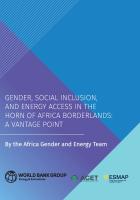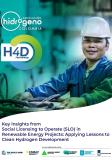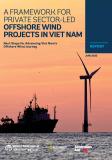Publications
The objective of this assessment is to identify gender and social inclusion gaps with respect to equitable access to clean and modern energy in the Horn of Africa (HoA) borderlands, specifically in Djibouti, Eritrea, Ethiopia, Kenya, Somalia, and Sudan. It examines the differences in the constraints that women, girls, men, and boys face about equitable access to energy in the HoA borderlands and the potential benefits and impacts of equitable access to energy.
Further, it also delves into the gender disparities that minorities and other vulnerable groups in the borderlands of the HoA face in accessing clean energy. In all cases, the context of forced displacement is considered. The energy services examined include on-grid, mini-grid, and off-grid electricity and clean cooking solutions. These energy services are evaluated in the context of household access to electricity, productive uses of energy, and access to clean cooking technologies.
The report also examines gender-specific policy and legal context, gender equality engagement of international organizations, gender and energy access situations in the borderlands, and gender gaps and challenges in relation to energy access and cross-border trade. The outcome of the assessment ultimately informs the integration of gender dimensions and pragmatic considerations for other vulnerable groups in the design of the HoA Regional Integration for Sustainable Energy Supply project with respect to energy access, as well as further HoA initiatives within the energy sector. Considering the unique challenges of gender and social inclusion in the HoA borderlands, addressing the access gaps in the energy sector remains very important for development. Particularly, by providing improved access to electricity and clean cooking solutions, women and other socially excluded groups can take advantage of opportunities available to engage in economic empowerment activities, build sustainable livelihoods, improve human capital accumulation, and ultimately contribute to the development of the HoA region.
Beyond the HoA, this report also targets a global audience by providing insights into the intricacies of conducting gender and social inclusion assessments, especially in borderland regions, and also highlighting best practices or evidenced-based solutions for closing gender and social inequality gaps for energy access in situations of conflict and fragility.
Africa Gender and Energy Team. 2025.
Gender, Social Inclusion, and Energy Access in the Horn of Africa Borderlands: A Vantage Point. ESMAP Paper. © World Bank. http://hdl.handle.net/10986/42946 License: CC BY-NC 3.0 IGO.




